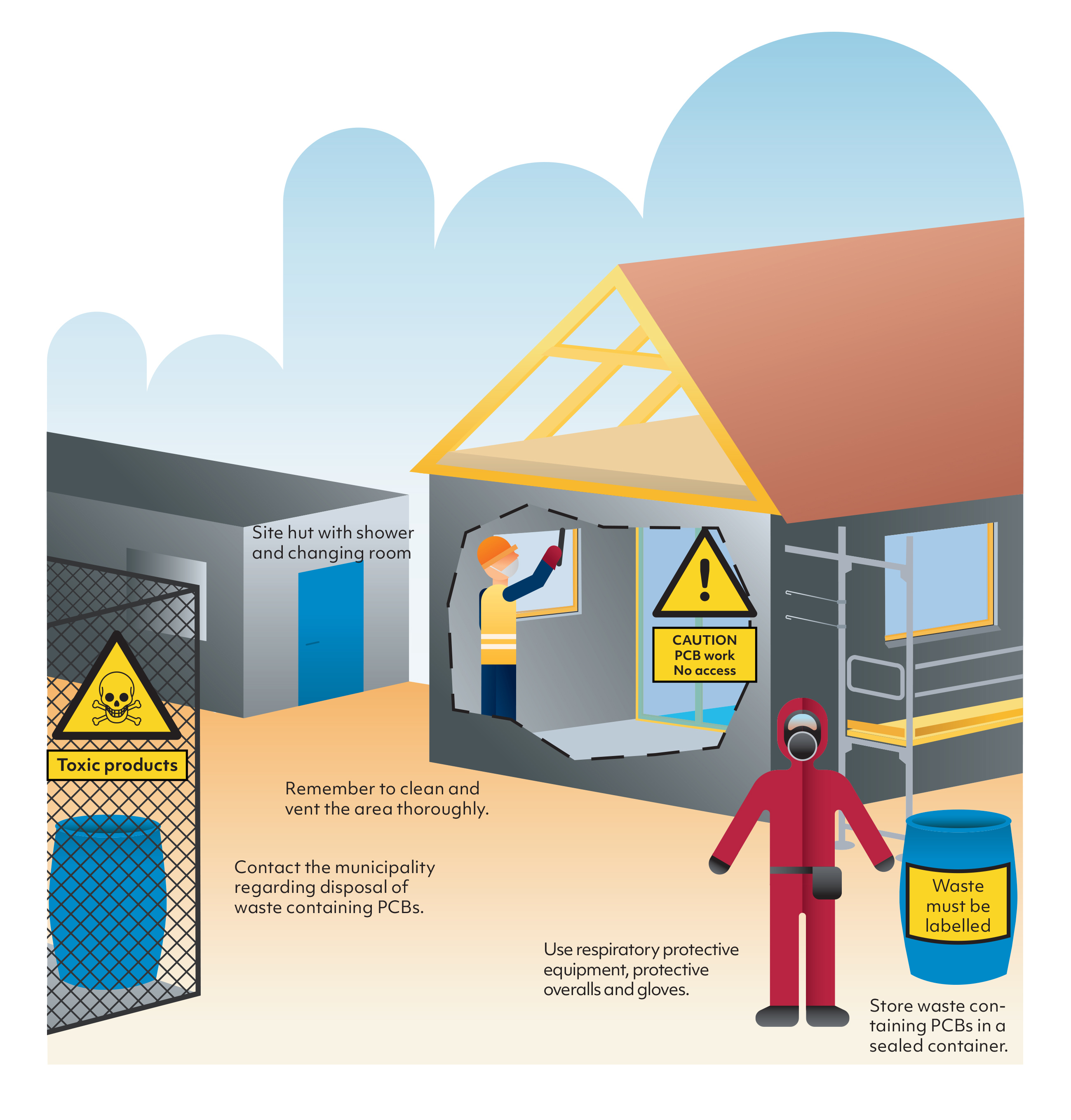Construction workers risk being exposed to harmful PCB chemicals when replacing or removing building components. The employer is responsible for ensuring that employees are properly protected against PCBs. Read below about how to protect yourselves against PCBs.
Check whether there are PCBs in the building
Before commencing work, you must check whether the building contains PCBs. If the building components contain PCBs, you must draw up a plan for how to prevent exposure to PCBs during work.
Training and instruction requirements
The employer must ensure that employees receive the necessary training and instruction if they are to handle building components containing PCBs. For example when replacing windows, removing rubber-like fillers and paints, and when removing double-glazed windows.
Avoid contact with PCBs
PCBs must not come into contact with the skin, and avoid inhaling vapours, smoke and dust. Use ventilation, respiratory protective equipment, protective gloves and overalls. Make sure to cover the area and thoroughly clean with a vacuum cleaner (class H).
Be careful not to spread PCBs to others. Remember good personal hygiene, e.g. wash your hands and face and shower at the end of the workday. Do not take overalls into the site hut.
Waste
When storing waste containing PCBs, it is vital that this is done safely to prevent exposure to harmful impacts. Waste must be stored in a closed container and labelled with the following text: ”Contains a substance that is covered by Danish OSH regulations as regards carcinogenic risk”.
Disposal of waste must be in accordance with regulations in the environmental legislation. Contact the local municipality.
Protect yourselves against PCBs
When removing double-glazed windows
Cover floors in plastic and cordon off the area.
When removing door frames
Cover the work area in plastic. Assess the need for mechanical ventilation and pressure difference.
When replacing windows
Dust and waste must be collected. Cover the work area in plastic, if necessary.



